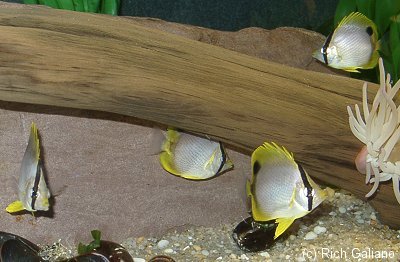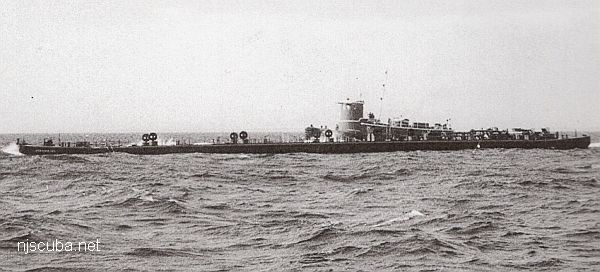Aquarium Guide - Feeding
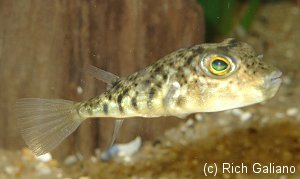
Feeding your fishes and other aquarium residents is an important part of keeping them alive. Merely buying some flakes at the supermarket and dumping them in once a day may be adequate for goldfish, but most types require a little more thought and effort.
Obviously, small mouths require small foods, and large mouths require large foods. Try to feed small portions several times a day, at least morning and night. Don't just dump it in and walk away - watch as they eat. Give them more if they finish everything and still seem hungry, but do not overfeed. Fish have preferences just like we do, and you may find that they refuse certain types of food outright. Make sure all the residents of the tank get something and make a note of who eats what and how much.
Dry Foods
Store-bought tropical aquarium fishes are probably already used to a diet of prepared dry fish foods and are easily fed. There is a wide variety of such foods available. Get several kinds, and alternate. This assures that the fish get balanced nutrition, and also breaks up the monotony for them. Types of fish food you might consider stocking are: thin flakes, thick flakes, floating pellets, sinking pellets, freeze-dried bloodworms, and freeze-dried krill. Color can make a difference - for example, red foods are accepted more readily than green foods. I buy several types of dry fish food in bulk about once a year.
Fresh and Frozen Foods
Although your fish may be happy and healthy on a varied diet of dry foods, if you want to see them eat with gusto, periodically give them some meaty frozen food. The commonest of these are beef heart, worms, and shrimp & fish meal, usually sold in pet stores in frozen slabs or cubes. Use a cleaver to cut the frozen slab into suitably sized pieces, and store them in an old margarine pot in your freezer. This way you can easily pick out a piece and feed it to your fishes whenever you like. Throw it right in frozen and let then gnaw on it, or thaw it out if you like.
Fish may also be fed raw kitchen scraps. Avoid foods that are salty, spicy, or greasy. Hamburger is far too fatty for fish to properly digest, and also leaves a slick in the water. Slivers of fresh fish, chicken, and lean beef will be relished. Many fishes will include vegetable matter in their diets. Spinach, lettuce, and even bits of fruit may be eaten. Next time you swat a fly, drop it in the tank - you'll be surprised.
Live Foods
Most wild-caught fishes will initially refuse dry or prepared foods, especially flakes. Some may learn to accept them over time, others will not. Some fishes will never accept prepared foods. They may key on the motion of the food, or the color, or the texture.
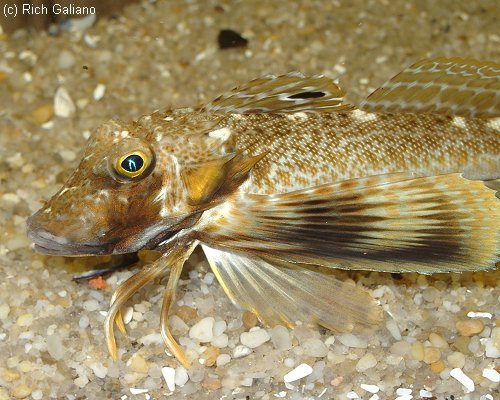
There are a number of live foods available from most pet stores. The best is Blackworms. These are small worms that are sold in portions. Blackworms must be kept refrigerated or they will quickly spoil. Keep them in a sealed glass jar about 1/4 full of water, where they will form a ball. Rinse the water out at least every other day under the tap, and the worms should keep for at least a week. An old tablespoon can be used for feeding. I keep the jar out of sight in the produce drawer of the fridge. Worms that escape your fish will take up residence in the gravel in a freshwater tank, but this is not usually a problem, as the fish will root them out. They die in saltwater, but wiggle violently for several minutes before they do.
Tubifex worms are similar to Blackworms, and may be kept the same way. Compared to Blackworms, they are smaller and thinner. Tubifex worms must be rinsed every day or they will spoil and die. Of the two types, Blackworms are far superior.
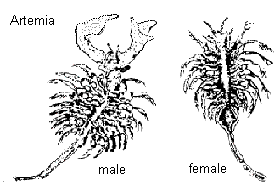
Adult brine shrimp ( Artemia, also known as "Sea Monkeys" ) are another excellent live food. Brine shrimp die quickly in freshwater, but will live for several days in a marine aquarium. Brine shrimp should be kept cool, but do not need to be refrigerated. Brine shrimp eggs are also available, and can be hatched out in ordinary saltwater. This takes about three days. They make an excellent substitute for plankton. For larger fishes, a range of inexpensive feeder fishes is available, from small guppies to minnows ( "pinkies" ) to goldfish. All are freshwater and quickly die in saltwater.
Finally, it is often possible to collect your own live foods. At night, simply dipping water with a fine net can bring up a variety of plankton and small shrimps, which are probably the closest thing to a natural diet that you can provide. Small mussels are another excellent natural food. They can be kept live in a marine tank, or frozen. Few fish can crack them open without help, but you can pop them easily with your fingers. For larger fishes, regular old earthworms are an excellent food.
A problem with all types of live food is that you risk introducing disease and parasites into your tank. In particular, I think store-bought worms are a major source of freshwater Ich. This should not be a problem for healthy fishes in a healthy tank.
Live Plants
Live plants (freshwater) will need feeding just like fish if you want them to thrive. The following table lists the major nutrients, as well as carbon dioxide and water conditioner. Trace minerals can be assumed to be supplied by water changes and fish waste.
| nutrient (by-product) |
formula (Product) |
form | goal mg/l |
amount for 1 liter |
| Iron (chelated) |
Fe 11% by wt. (Carl Pool Iron Chelate) |
powder | 0.6 | 20 g |
| Magnesium (sulphate) |
MgSO4*7(H2O) (Epsom Salts) |
powder | 6.0 | 227 g |
| Calcium (chloride) |
CaCl2*6(H2O) (road de-icer) |
pellet | 11.0 | 227 g |
| Potassium (bicarbonate) |
KHCO3 (brewer's supply) |
powder | 23.0 | 227 g |
| Carbon CO2 |
glutaraldehyde (Metricide 14) |
liquid | 2.0 | 300 ml |
| Water Conditioner |
Kordon AmQuel Plus | liquid | 23.0 | 500 ml |
| Oxygen |
O2 | aeration | maximize |
- nutrient
- the desired nutrient, with the by-product of the mixture, if any
- formula
- the chemical formula, and any applicable commercial product name or description
- form
- the physical form of the product - dry powder, liquid, etc
- goal
- the desired final concentration in the aquarium
- amount
- the amount of each product to make 1 liter of mixture
The goal concentrations were derived from much study on the internets. To make each treatment, mix the amount listed with 1 liter of water. For liquids, add water to the amount listed to make 1 liter. I use tap water, you could also use distilled water, but I don't see the point. You don't fill the tank with distilled water, and I have not noted any adverse reactions with tap water. The exact amounts are not critical - in most cases, I have already rounded them off to easy half-pounds or liters. The by-products are either desirable in their own right, or harmless.
Each mixture must be kept in a separate bottle - do not mix reagents. I use 1 liter Aquafina bottles. That's five bottles for nutrients, plus one for the water conditioner. Label everything. In particular, the potassium and calcium mixtures will completely eliminate each other if mixed in concentrate. The others are less reactive, but should still be kept separate. You could possibly mix the magnesium and iron, I've never tried it. The calcium mix will get very hot as you make it - that is what de-icer is supposed to do.
The resulting mixtures are all designed so that you dose them at 1 ml per gallon to the aquarium. This makes everything simple and minimizes mistakes. You can use a small graduated dosing cup - the kind that comes with cough medicine. I typically dose along with water changes - 1 ml per gallon of water changed, and 20-50% extra nutrients to make up for whatever has been consumed by the plants. That's roughly once a week. You should dose the CO2 more often, but I get lazy. I have also listed Oxygen here, as plants need that too.
Some Notes on Sourcing
The commercial products ( Metricide, AmQuel ) are all available online and are cheaper to buy in bulk - 1-gallon jugs. The chelated iron product is one of many, and one jar should last forever. Epsom salts are available at any supermarket or pharmacy - you want the pure product, with no scents or other additives. Likewise for the de-icer - you want pure calcium chloride with nothing added. The potassium product can be sourced from any brewer's supply house. None of these are much more dangerous than what you already have under the kitchen sink, but all of them should be handled carefully and stored safely away from small children and pets.
If you only have a small aquarium, it is probably not worth the trouble to make your own fertilizers. But if you have a large setup or multiple tanks, you can save a lot of money over store-bought mixes by making your own. Note: there is nothing wrong with store-bought fertilizers, they're just expensive.
You Don't Need
The following plant nutrients do not need to be added to an aquarium that is well-stocked with fish, as they are probably already present in over-abundance and should be removed by regular water changes:
| nutrient |
formula | |||
| Nitrogen |
N - NO2, NO3, NH4 | fish waste | minimize | |
| Phosphorus |
P | fish waste | minimize | |
| Sea Salt sodium chloride |
NaCl |
Finally, while sea salt is a good topical remedy for many fish ailments, it is really not a good thing to add to the freshwater aquarium in general. Never use fluoridated table salt in an aquarium, Kosher salt will do in a pinch.
Types of Plants
Freshwater aquarium plants can be grouped into two broad classes: root-feeders, and leaf-feeders. This has nothing to do with their taxonomic relationships or classification.
Root-feeders are much like terrestrial plants, they absorb the bulk of their nutrients from the substrate through the roots. Popular root-feeders include Amazon Swords and Crypts. Leaf-feeders are capable of absorbing nutrients over their entire surface; roots, if any, are mainly for anchoring. Leaf-feeders include all ferns, anubias, and any plant that is capable of growing in a floating habit.
Leaf-feeders are easy, and simply providing nutrients in the water as described above should suffice. But root-feeders have more specialized needs and will waste away if not taken care of properly. For those who are truly dedicated to their plants, there are special substrates and expensive "root tabs" available. I do something different though.
Better garden centers sell flower pots in very small sizes. I have seen them as small as thimbles, but I use 3-5" diameter. Glazed pots are also available in many colors besides the usual orange. I put a small stone over the hole in the bottom of the pot, and lock it in place with a little gravel. Then I fill the pot about 2/3 with a good quality potting mix and set the plant in it. Finally, I cover the potting mix with a layer of gravel to keep the soil in place and soak the whole thing through before placing it in the aquarium.
Crypts and Swords will grow like crazy in a setup like this and will need to be re-potted with trimmed roots once or twice a year. That's really less trouble than you'd think since the pots are very small. I have seen crypts grow so wild that they completely filled the pot with a solid root mass. Swords will bud off baby plants that you can separate and put in new pots.
I keep the gravel in the aquarium rather deep and steeply sloped to the back and sides, with the pots buried almost to their rims and hardly showing. A great advantage of this method is that you can rearrange the plants any time you want, and also use an under-gravel filter without getting it all tangled in roots. I anchor most leaf-feeders into small pots for this same reason. Loaches will dig at the pots and empty them over time, a few larger stones arranged around the plant will stop this.
I don't believe much in root tabs. You can make your own root tabs from empty gel capsules and a product called Osmocote. I've played around with this, and I think that using pots as I have described is much more effective. In addition, the little yellow shells of the Osmocote last forever and eventually make a mess.
Problems
Following are some symptoms of nutrient deficiencies:
- Iron
- new leaves pale - not enough chlorophyll
- Magnesium
- similar to iron
- Calcium
- new leaves stunted, pale and thin
- Potassium
- yellowing, broad-leafed plants (Swords) develop holes in leaves
- Carbon
- slow growth, melting, pale color, weak stems and leaves
- worn-out
substrate - plant stops growing, does not recover from pruning
As you can see, most of the symptoms overlap considerably, making exact diagnosis difficult. The easiest thing is to just assure that there are sufficient levels of all critical nutrients, rather than try to guess which one is lacking.
In addition, excess Phosphorus leads to algae growth, and excess Nitrogen in its various forms is unhealthy for your fish.

